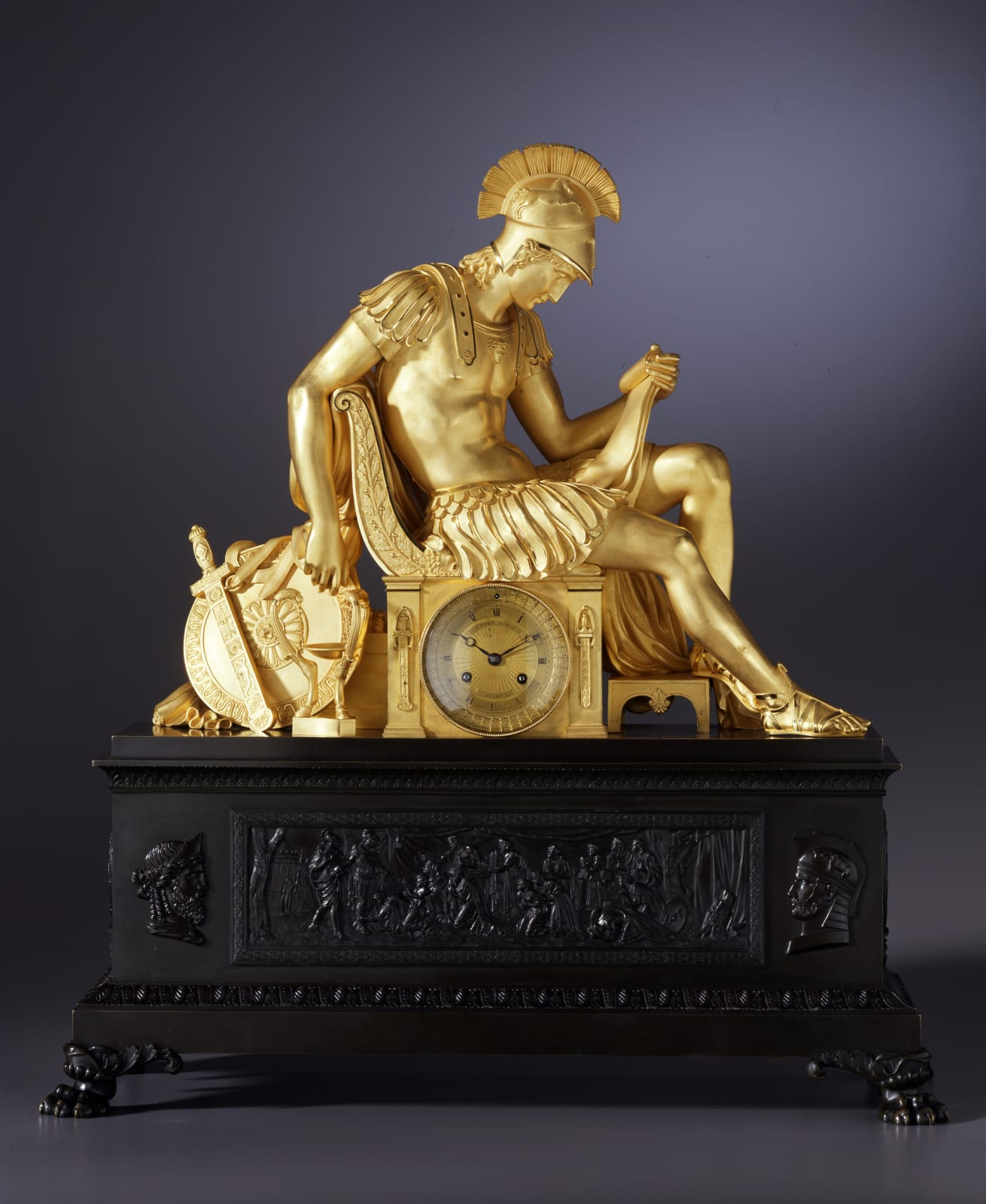Louis-Stanislas Lenoir-Ravrio
Literature
J. Ramon Colon De Carvajal, "Catalogo De Relojes Del Patrimonio Nacional", 1987, p. 175, cat. no. 154, illustrating a clock of the same model though unsigned on the dial, the case with slight variations to include the figure of Alexander in patinated bronze, a lack of perfume burner, a red griotte marble base and addition of lion paw feet. Tardy, "Les Plus Belles Pendules Françaises", 1994, p. 268, illustrating the latter clock. Elke Niehüser, "Die Französische Bronzeuhr", 1997, p. 222, pl. 510, illustrating a clock of the same model.
A very important Restauration gilt bronze mantel clock by Louis-Stanislas Lenoir-Ravrio, signed on the gilded dial L Ravrio Bronzier à Paris, the dial with Roman numerals and blued steel hands for the hours and minutes. The movement with anchor escapement, silk thread suspension, striking on the hour and half hour, with outside count wheel. The magnificent case with dial set within the legs of a chair upon which is seated the hero Alexander the Great reading a scroll and wearing armour, his helmet cast with the figure of his horse Bucephalus, alluding to his education by Aristotle, with his right hand dangling over the back of the chair over which is draped his cloak above his sword and shield and a perfume burner, the whole on a rectangular base cast to the left with the head of Darius, King of the Persians and to the right the head of Porus, King of the Indians wearing an elephant mounted helmet, the two kings centred by a large frieze cast with a scene after a painting by Charles Le brun of La Famille de Darius et Alexandre, showing Alexander accompanied by his friend Hephaestion on a visit to Darius' family taken as prisoners, with Darius' mother falling at the feet of Hephaestion who she has taken for Alexander.
Paris, date circa 1820
Height 75.5 cm, width 71 cm, depth 27 cm.
Louis-Stanislas Lenoir-Ravrio (1783-1846) was the adopted son of André-Antoine Ravrio (1759-1814), who was himself one of the greatest French bronziers of the pre and post Revolution period. Lenoir-Ravrio worked with the elder for a number of years; he became his partner in 1811 and continued the business on the elder's death, gaining repute for work supplied to the Garde-Meuble and for his exhibited work, for which he was awarded a silver medal.



